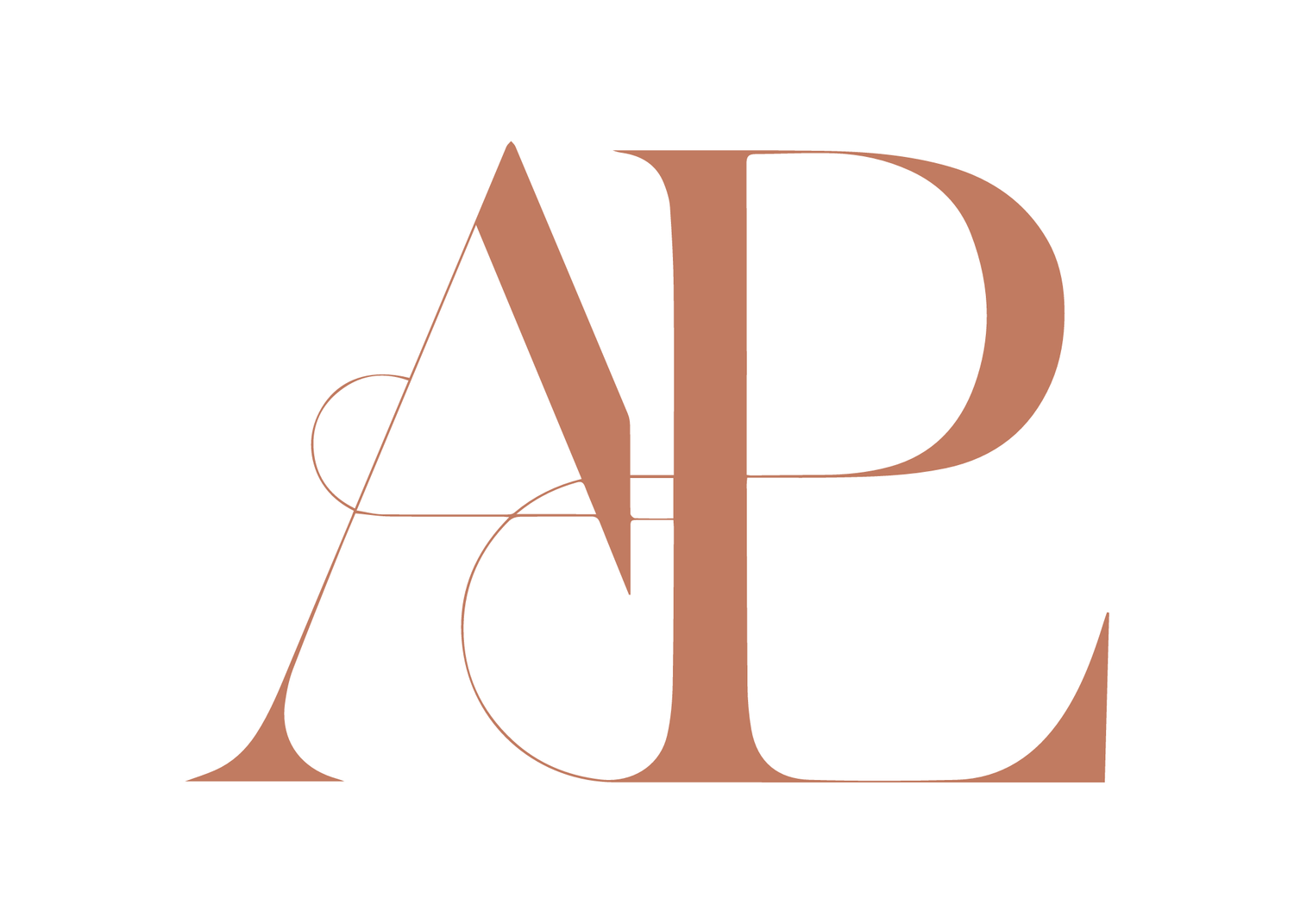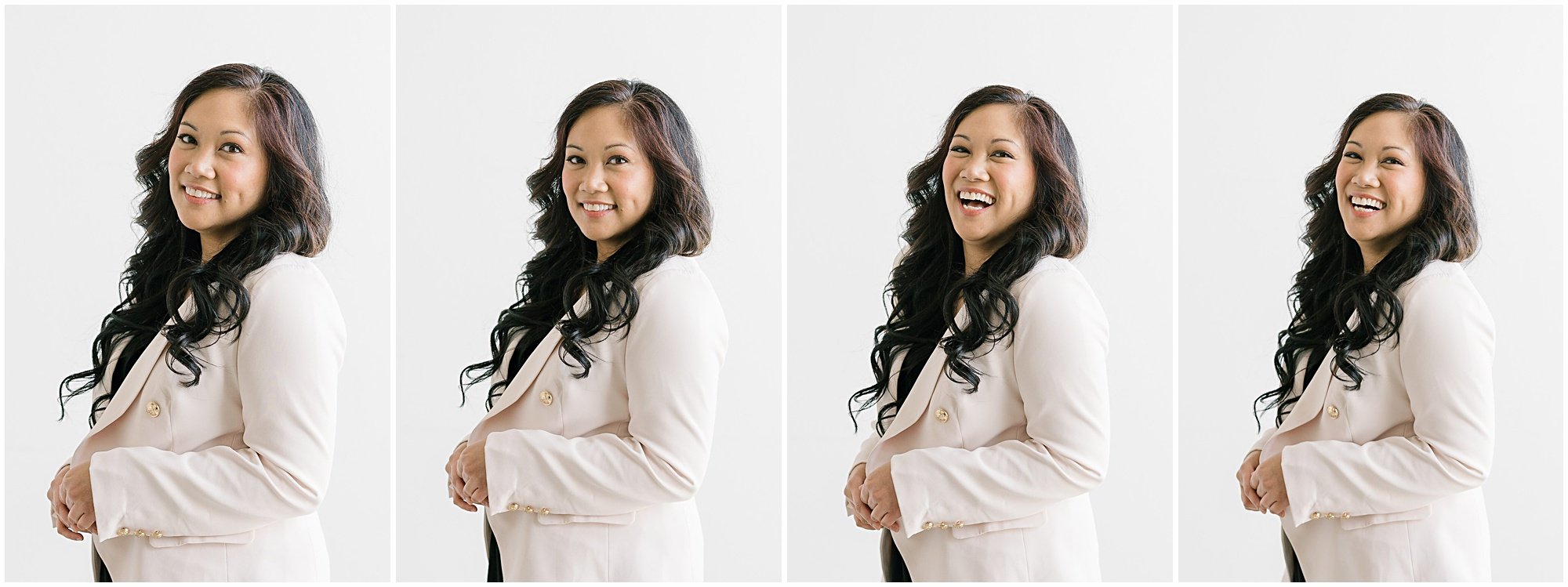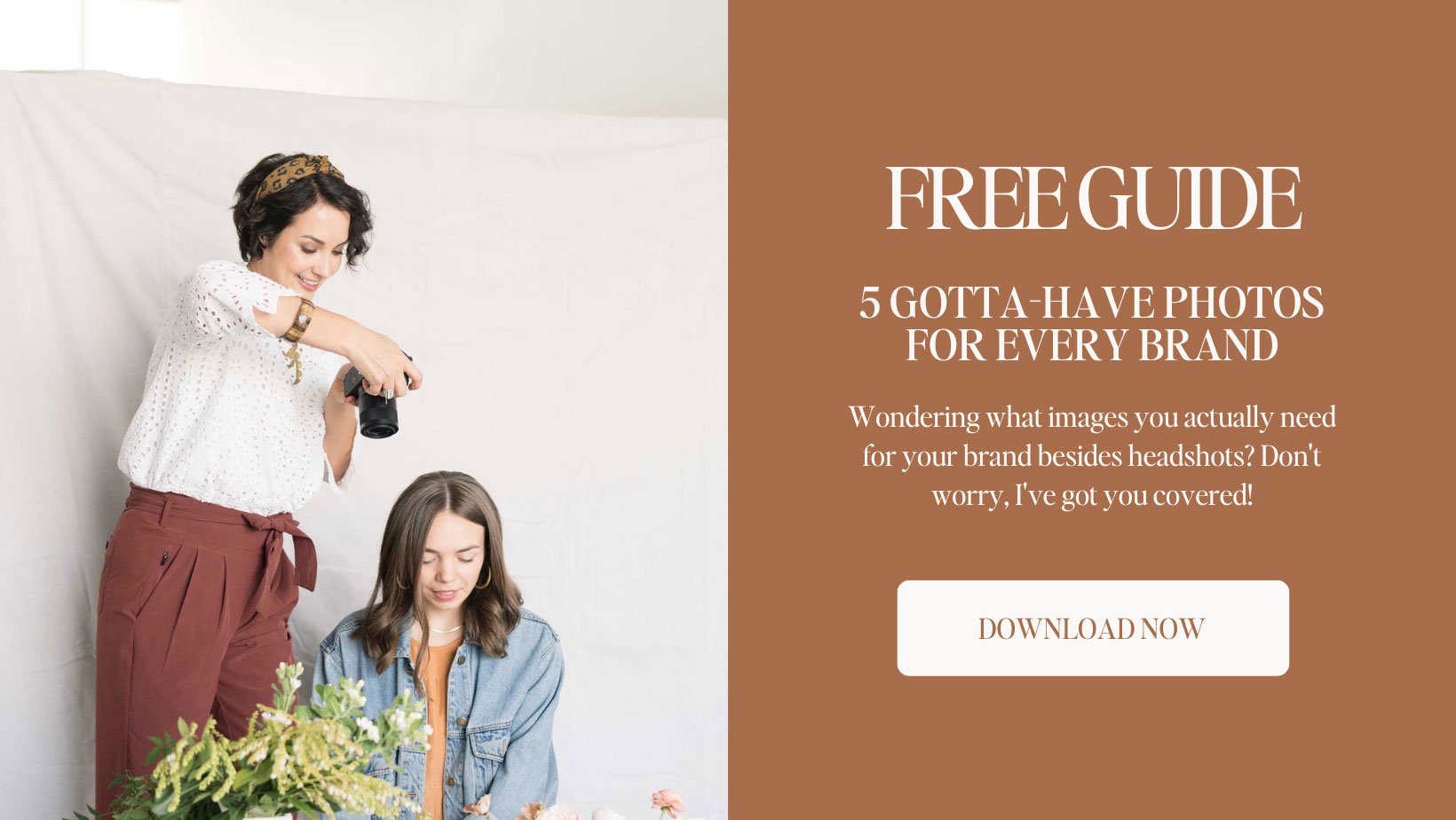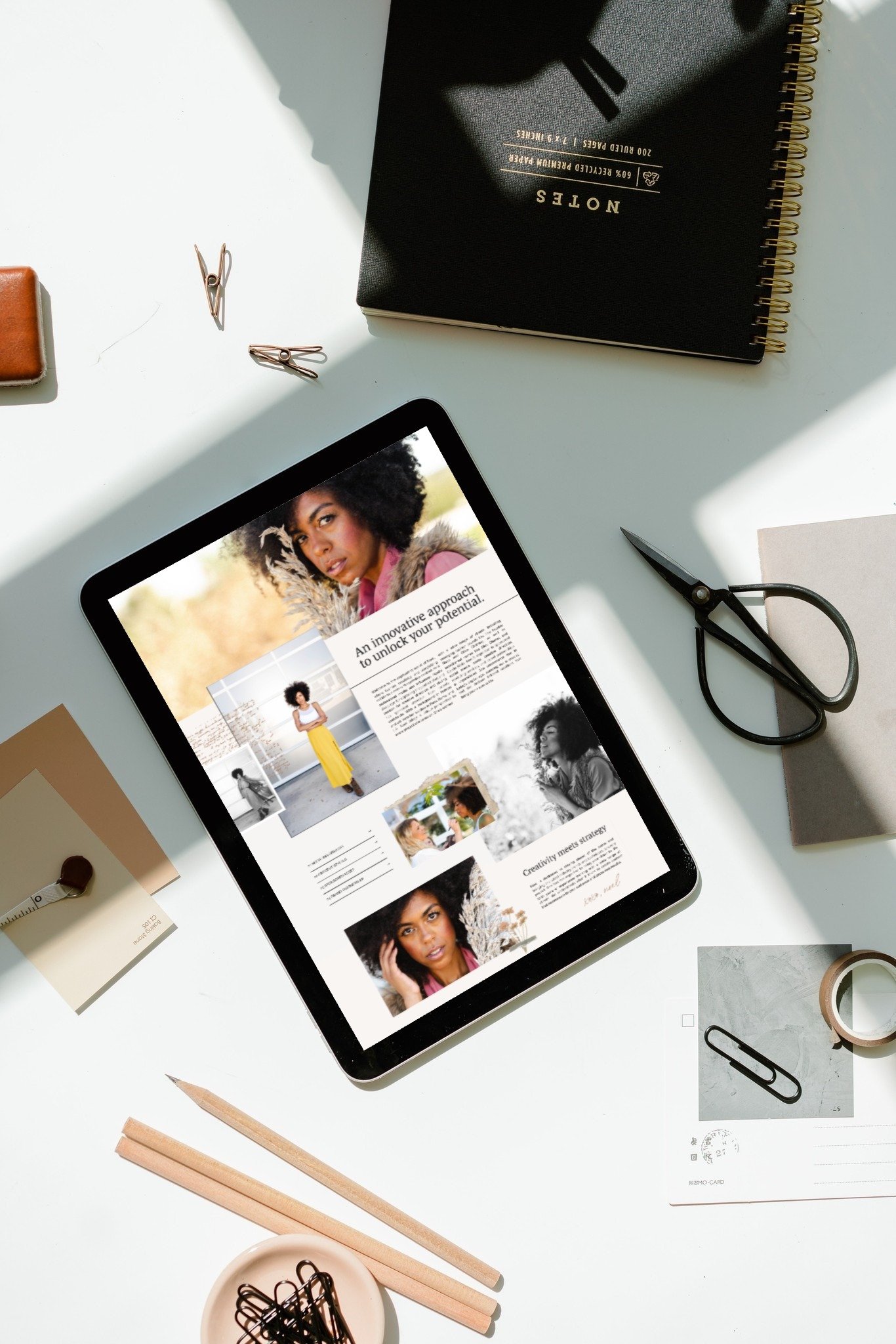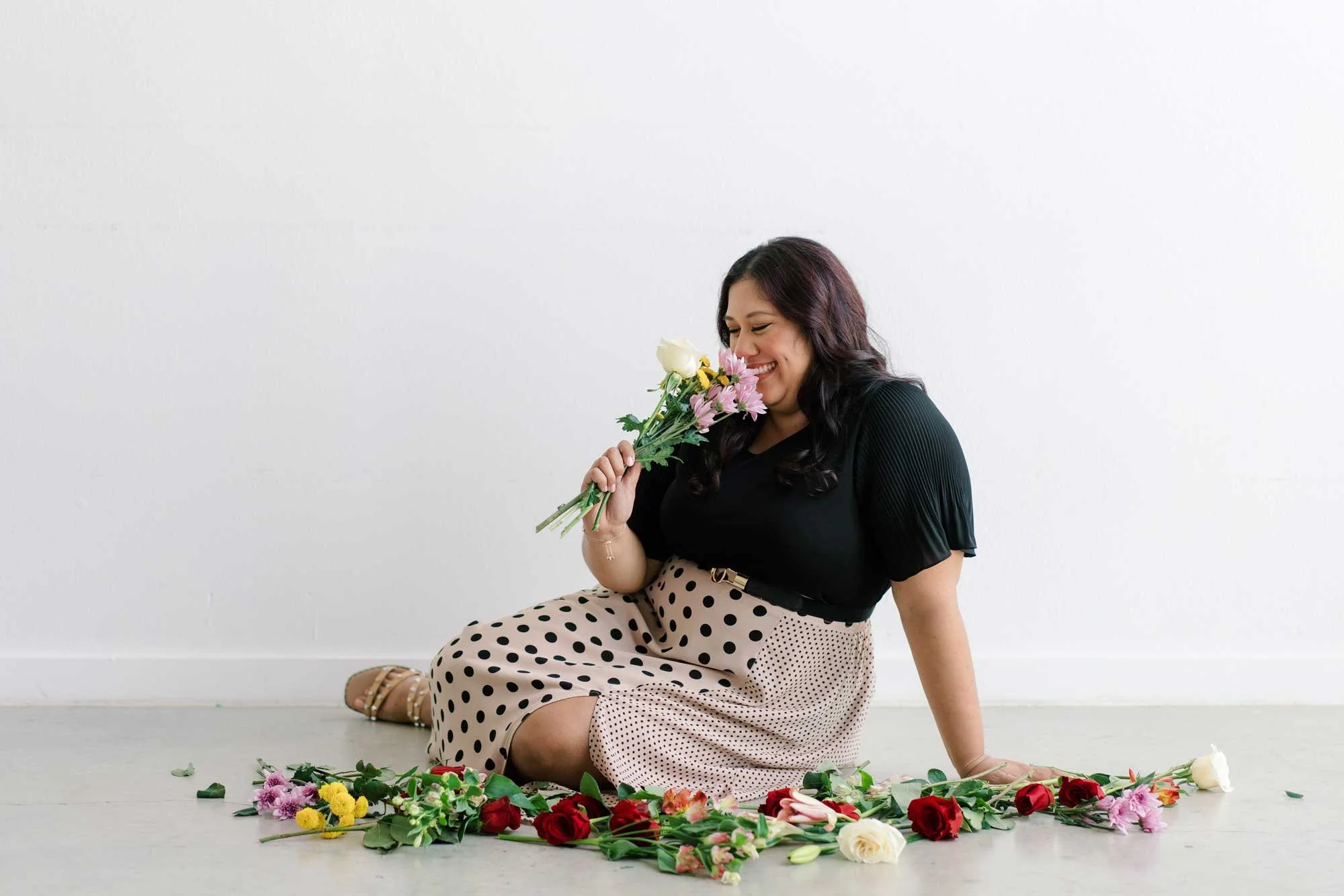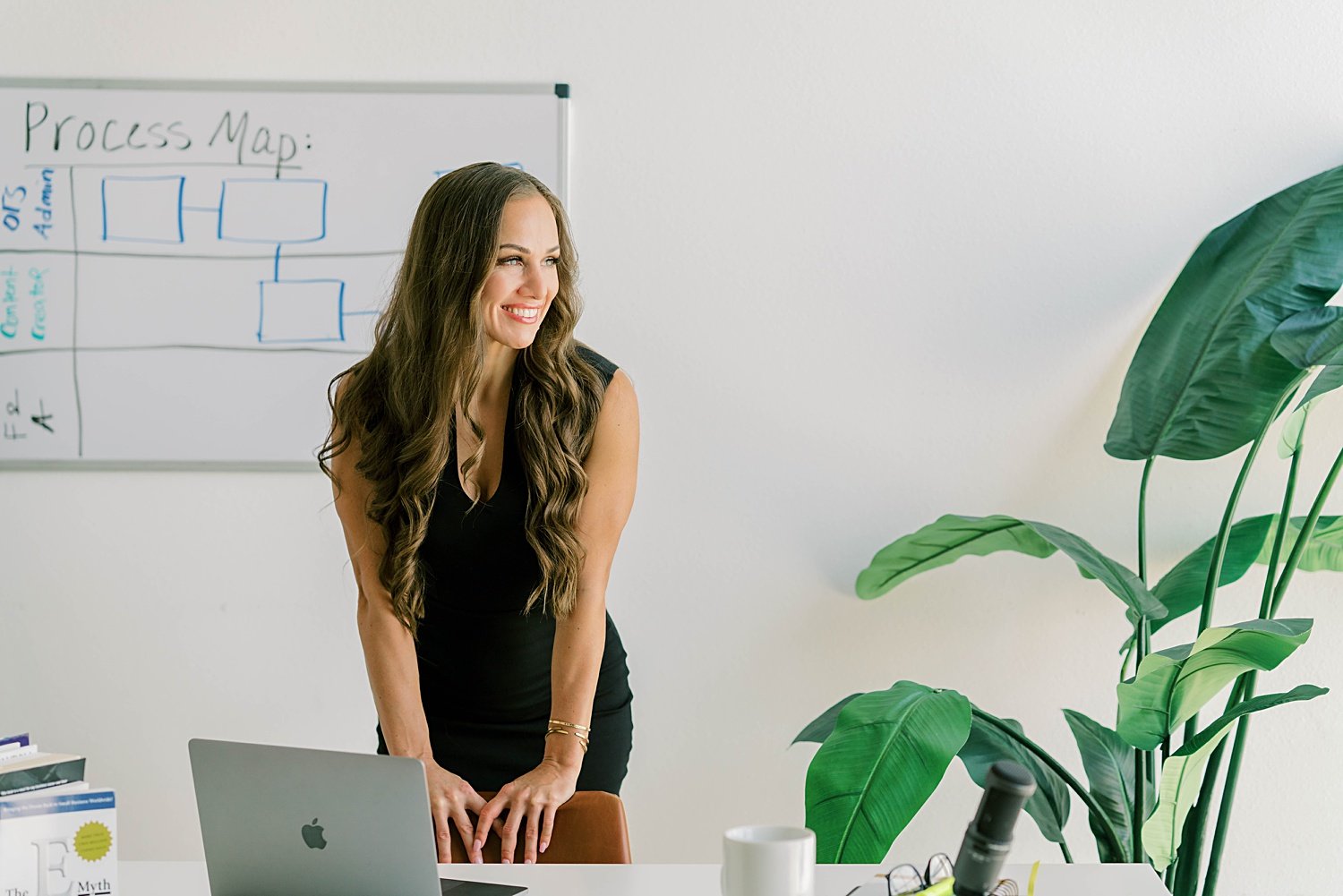Brand Photography Secrets: How to Use Body Language In Your Photos To Get What You Want
Your Body Talks
There are many secrets to achieving great brand photography, but knowing how to communicate with your body is the most important one.
Have you ever gone to someone's bio or LinkedIn and thought, “Nope." You wrote them off immediately. Do you know why?
Even though you might not be able to put it into words, something in the image signaled to you whether they were friendly. Trustworthy. Or sincere.
Your subconscious performed a thorough analysis of the given information. And even the subtlest nuances of body language, visual cues, and microexpressions have the ability to make or break an image. That’s both good news and bad news.
Our brand images can help us build trust with our target audience, but they can also turn people away with a glance. That’s why when it comes to brand photography, it’s more important than ever that we get every single detail right - right down to the tiniest expressions.
Use this body language guide, full of my favorite brand photography secrets, to help you get the results you want from your branding photos and really stand out from the crowd.
How To Become Body Language-Aware Before Your Brand Photo Shoot
Think about a great photo you’ve seen of someone you don’t know. A picture that made you think, “I could be friends with them!” What helped you form that opinion? Was it their striking good looks? Their perfectly styled hair? Probably not.
Instead, maybe it was a captivating smile, glowing eyes, or a confident posture? Whether you realize it or not, it’s probably all of those things combined.
Becoming body language-aware takes practice, but that doesn’t mean you need to practice posing. My job, as a brand photographer, is to coach you, to look for how you naturally move your body, and then to help you adjust from there.
To equip yourself with a little bit of know-how, I simply recommend becoming aware of a few things:
1. Life
Motion and expression create life, and images always look better when they have life in them.
WHAT TO DO
Pay attention to the images used in Instagram ads, magazines, and Pinterest that captivate you. Ask yourself:
What are the models doing in the image?
Is there a sign of subtle movement?
What feeling or mood do you get from the image?
How do their facial expressions help convey it to you?
Performing this imagery analysis will help bring your awareness to the power of body language and the value of expressions. It'll also give you some ideas of your own.
2. Expressions
Facial expressions are the most important part of your image. It’s what people notice most and it’s how people “read” whether you are friendly or trustworthy.
WHAT TO DO
Practice in the mirror or on your smartphone camera. If an image looks fake, it's out. Try tilting your head in varying positions or moving your shoulders around. Experiment with changing your eyes, your smile, etc. Focus mostly on your eyes. You want to get rid of what I jokingly call, "dead eyes." It’s not uncommon for your eyes to become expressionless. It happens when you're super overwhelmed, your mind is drifting, or you're feeling tired.
In sessions, my goal is to get you to come across as more sincere and more alive. I’ll coach you through it, but working on this at home ahead of time will give you a good idea what I'm talking about so we’re on the same page.
3. Chin and Jawline
No matter our body types, it seems we all have one thing in common. Everyone wants their chin to look longer, leaner, and to have more definition.
WHAT TO DO
You can practice this at home, too. On camera, your jaw always needs to come out further and lower than you think. That means you'll hear this direction from me a lot: “Pretend a string is pulling your head up toward the ceiling. Then bring your jawline out and down by pulling it away from your collarbone area.”
Pulling your chin out and down will create more definition in the jawline for you. Again, these are things we'll tackle together, but you can use this trick to step up your images at home.
4. Hands
I’ve seen my fair share of clients turn into Will Ferrel as Ricky Bobby “I’m not sure what to do with my hands!”) before they realized I had them covered. As funny as it sounds, it’s a valid concern. Everyone gets so hung up on hands because you NEVER have to think about what your dang hands are doing until you're staring down a camera lens. This is universal! But, still, nothing ruins an image like a super-tense, talon-like hand.
WHAT TO DO
Practice placing your hands around your face and body in the mirror. Likely your hands are soft-looking when you do this alone, but sometimes when you get to the shoot, your hands suddenly hold a ton of tension. You're nervous. It happens. But try thinking “ballet fingers.” We want them to be soft and loose. Notice the difference in the mirror when your hands and fingers are tight and heavy. When you're at rest throughout the day, check on your hands. What are you doing with them? Pay attention to how your friends and family place their hands when they're sitting across from you and listening. What about when they’re talking?
The whole point of this practice is simply to increase your awareness of these things. It’s the best way to find natural ways to engage your hands so you feel more at ease on shoot day.
5. Distance
It’s another universal law: Things closer to the camera always look bigger. Things further from the camera appear smaller.
WHAT TO DO
Try this in the mirror at home. Move your hips toward the mirror and notice what happens. Then move your hips away. Now try turning your body a little to a 45-degree angle and shift your weight to your back leg, letting your front leg loose. How does your reflection appear now? Try shifting your weight around and moving your feet into different positions.
Here we did two things. We pushed her hips back and brought her front shoulder down. This is a more flattering angle for both the hips and the jawline/neck. This adjustment also lets the image feel more inviting and inclusive.
Use this rule to de-emphasize the parts you wish to minimize. Find the distance that works for you by moving them closer and further from the mirror or camera.
This is a very slight shift of hips back but you can see how it better accentuates her waistline and highlights more of her curves. Hips back make your waist appear smaller. Hips forward make your waist appear larger-- but also can show more of the curves on your butt too. It's all in how you do it!
Let’s Play A Game.
This Or That: Body Language Edition
Fake vs. Real Smile: Can you spot the difference?
Once you learn my brand photography secrets, I know you can. But read this to help you know why,too. That part might be a little harder to identify.
A fake smile occurs only in the bottom half of your face. You consciously make your face move. With a real smile, you don’t have to think about it. The little muscles around your lips move involuntarily. Because you’re faking it, when you fake smile, your mouth moves the way you think it should…but nothing else does. A real smile, on the other hand, includes the eyes and the muscles around them.
These are both beautiful & usable images but they convey different feelings. One smile is also more genuine than the other. What do you think?
We sometimes call the lines of those little muscles “laugh lines” or “crow’s feet” and people who frequently smile and laugh will get them as they age.
Sadly, many people think of “crow’s feet” as a negative sign of aging, but the truth is people actually gravitate toward people with visible laugh lines. Why? Because those lines indicate happier people. (And - not for nothing - happier people look younger! Take that, “crow’s feet.”)
I never deliver fake smiles in galleries. They do the opposite of what you want: fake smiles alienate people and turns them off to your business. Part of my job is ensuring I garner real smiles from you, and cull out any that appear fake in the editing process.
The expression in the 1st image has gone stale and begins to feel forced, while the 2nd image feels alive and much more sincere. Can you see the difference? Sometimes the microexpressions can be very small and almost unnoticeable, less obvious than this here.
Chin Out vs. Chin Back: Which one is more flattering and inviting?
Double chins happen to everyone, even supermodels. To avoid the dreaded double chin, you want to engage your chin. First, gently pull your head up as if a string is lifting it from the top. Then, make like a turtle and point your chin down and out. It will feel weird, but extending your chin out is more flattering, no matter what your body type is.
Here you can see that a little coaching and a small angle tweak made a huge difference in the way the jawline presented.
Having her bring her chin down narrowed the width of her face here. I use this tweak to help add reliability to people's images and reduce a feeling of "confrontation" or "cockiness". She doesn't create that feeling here, but her chin down looks more polished and professional overall.
Inviting/Friendly vs. Cold/Closed Off
Check out these images. Which expressions and body language draw you in? Which ones turn you away? Can you put the difference into words?
This is a great example of the power of microexpressions. You'll notice the change here is very small, but if you look closely you'll see that the 1st image creates a feeling of discomfort for the viewer. It feels as though you aren't invited into her space and she doesn't want you there. Meanwhile, in the 2nd image, she's offering the smallest invitation and it feels as though she's enticing. A little shift makes a big difference!
The first image is perfectly nice, but it feels very corporate and closed off. She's smiling but you may not believe it fully. In the 2nd image, you feel her let her guard down and you find her relatable and friendly.
Body Language And The Meanings Of Different Poses
As a brand photographer, I have go-to poses that I tend to incorporate into most shoots. Here’s the meaning that each of my favorite poses convey:
1.Genuine Laughter
People can tell the difference, so don’t try to fake it. Laughing communicates that you're warm, relatable, and tons of fun. That’s why we’ll definitely be laughing during your shoot. BONUS: It relaxes you and calms your nerves!
And trust me when I say that the best way to get a true laughing image you'll love is to remember to laugh "out and down".
2. The Look-Back
This pose can feel kind of flirty and they’re great for teasers of special offers, announcements, or other good things to come.
3. The In-Motion Shot
Whether you’re walking or performing some other forward movement, this pose expresses confidence, power, and relatability. You’re heading toward great things, and your audience will want to come along
4. The Hug Headshot
It's a headshot, but without the stiff, formal posing. This subtle, feminine pose communicates a warm, nurturing connection with your target audience.
5. The Seated Power Pose
This pose displays credibility and confidence. It’s clear you know what you're doing, and you’re an expert they can trust. And with a few mix of movements from either you, the subject, or from the photographer, you can easily get so much variety from in your images from the same pose.
About Those Microexpressions…
Microexpressions are critical– often more critical than people think. When it comes to pictures, I see these tiny facial expressions being ignored or missed time and time again. But note that microexpressions are one of the best-kept brand photography secrets!
Throughout your life, you’ve learned how to read other people’s microexpressions, but you probably don’t even notice when you do it. We use microexpressions to read other people's faces and draw conclusions about how sincere they’re being. Microexpressions reveal to us how someone really feels (no matter what they’re trying to portray.)
Microexpressions are very brief and involuntary, and because of that, they cannot be faked. So it’s more essential than ever to have someone on the other side of the camera who can help you portray genuine, preferred expressions.
Want to learn more about the different microexpressions and their power in your personal brand photos? Check out one of my favorite experts on the topic, Vanessa Van Edwards.
How A Body Language-Aware Photographer Can Help
It is clear that sincere expressions and inviting body language are important. But these are much easier to achieve when there is a true, real-life connection.
Connection is hands-down the most important part of any pose. If you’re able to build a connection with your photographer, you’ll portray a truer connection with the camera and, in turn, your audience. Don't worry about looking perfect or buttoned-up. I promise that a little messiness and authenticity will take you much further in building a relationship through the screen.
Make it a priority to get someone you're excited to work with, someone that makes you feel seen and supported. Someone who understands you and your goals.
But also find you someone who can differentiate the sincere images from the ones that come across as awkward, disingenuous, or uncomfortable. You need a brand photograph that will intentionally curate your gallery so you don't mistakenly use an image that pushes your audience away.
Take these brand photography secrets and run with them. On shoot day, if you're having fun and feeling like you're taking photos with an old friend, you’ll know you’ve found someone who can capture the real you. And your favorite side of you.
Ready to show up as your best, authentic self?
If you’re in the Austin, Texas area (or will be), be sure to check out the heartfelt brand experience and shoot me a message when you're ready to chat.
